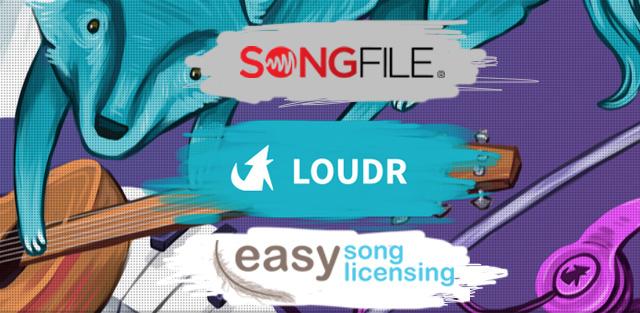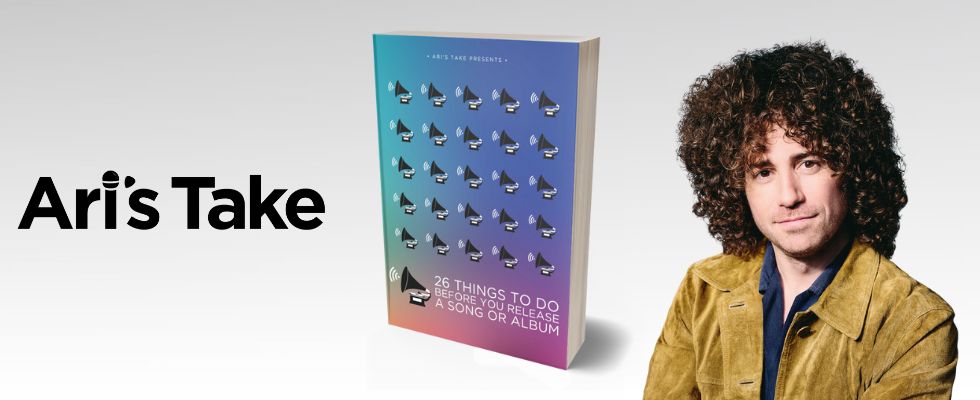Last week Loudr announced that they are making it super easy for artists to obtain a mechanical license to (legally) release cover songs through any digital distributor (not just them). You can read my article on Digital Music News about it here. Harry Fox Agency (HFA) as most of you know, has been doing this for years via their service Songfile.
Up until this point there really have only been a few simple options for indie artists like me and you to obtain a mechanical license to release cover songs: HFA Songfile, Limelight, Easy Song Licensing (which honestly, I just discovered today…so) or distributing the song with Loudr.
Well, Limelight is shutting down this week. So Loudr has decided to fill the void (and bring a bit of competition to the market) and is now offering a super simple way to get a license to release cover songs.
The biggest difference between Loudr, Easy Song Licensing and Songfile is that Songfile will only issue licenses for songs they represent. HFA represents most publishers (in America), but not all. So if you want to cover an obscure German band (with no US representation) or a hot indie act out of Boston who doesn’t have a publisher, you wouldn’t be able to through HFA. Loudr and Easy Song Licensing will hunt these licenses down for you.
**UPDATE: Loudr has been acquired by Spotify and no longer offers this public facing service.
**It’s worth noting that some distributors, namely DistroKid, will handle the mechanical license for you if you distribute with them. Some add an additional fee for doing this, but it saves you the headache of going through this process of getting the license on your own.
+CD Baby, TuneCore, Loudr, DistroKid, Ditto, MondoTunes, Zimbalam or ReverbNation
Using these services (Loudr, ESL, Songfile), you estimate how many downloads/CDs you will sell and pay that amount x 9.1 cents (the mechanical royalty rate set by the US government – if the song is under 5 minutes). So if you think you’ll sell 1,000 downloads of your Oasis cover, you would pay $91 up front + the service fee. Every service will then pass 100% of those royalties along to Oasis’ publisher.
Loudr charges $15 service fee for one song,
$14 for 6-10 songs
$13 for 11- 20 songs
$12 for 21-50 songs
$11 for 51-100 songs
$10 for 101+ songs
Songfile charges $16 service fee for one song,
$14 for 6+ songs.
Easy Song Licensing charges $14.99 service fee for one song,
$13.99 for 6-10 songs
$12.99 for 11 – 20 songs
$11.99 for 21+ songs
Songfile and Easy Song Licensing will only issue licenses up to 2,500 downloads. If you need more you have to go directly to the publisher. Loudr currently offers up to 5,000 downloads through their system, but if you need more you can email them directly at support@loudr.fm.
If you end up selling more than you initially estimated you can purchase a new license from Loudr or ESL for 50% off the service fee.
I have purchased licenses through Songfile in the past and distributed a couple songs with Loudr so can vouch for them. I have never used Easy Song Licensing and they didn’t return a phone call in time for this posting. I don’t have any reason to believe they don’t deliver on what they say, but if you’ve used them in the past, please post about your experiences in the comments!
Songfile can issue the license immediately and because Loudr and ESL will issue a license for virtually any song, Loudr says it may take up to a week to track down a license (because they’ll go directly to any publisher). But Loudr’s CEO, Chris Crawford, told me that most licenses will take hours, not days. Easy Song Licensing claims they can clear a license in 1-2 days.
On the license form, all services have a section for you to estimate how many “interactive streams” you will have. HOWEVER, DO NOT SELECT ANY!
Spotify ALREADY PAYS mechanical royalties directly to HFA (and then HFA pays publishers) so you’d be double paying. Rdio already pays mechanical royalties directly to Music Reports Inc (and MRI pays publishers). And international collections agencies grab the mechanical royalties from international streaming services like Deezer and pay publishers directly.
In addition, their per stream rate is 1 cent. Which is SUPER HIGH considering Spotify is paying a mechanical royalty rate at about $.0007 per stream. Not to be confused with the sound recording royalty rate (which is about $.006 per stream on Spotify). But again, this isn’t meant for Spotify.
Why Loudr, Songfile and Easy Song Licensing ask you how many interactive streams you’ll get is ONLY for Soundcloud, Bandcamp or if you want to host a streaming player on your website (via Bandzoogle or something like that), HOWEVER, a rep from HFA told me that legally you can’t get a license for self hosted music players if they aren’t monetized. Chris Crawford of Loudr said that there is a lot of grey area when it comes to how the law is interpreted. Regardless, no publisher is going to sue you for hosting a streaming cover song on your website. For one, it would be nearly impossible to audit and even if for some reason you were getting millions upon millions of streams on SoundCloud, the rate you’d owe would not be $.01 per stream but rather the compulsory streaming rate set by the government – which deals with an extremely complicated formula which is based off of the streaming services subscriber number and total revenue. But again, at least on Spotify, works out to be ABOUT $.0007 (yes three zeros after the decimal) per stream.
See all the other charts and calculations for other streaming platforms here.
Remember mechanical royalties are for SONGWRITERS (and publishers). Sales and Sound Recording royalties are for ARTISTS (and labels). There’s a major distinction between the two.
You AS AN ARTIST, releasing a cover song (by a songwriter) must get a mechanical license so that songwriter gets their 9.1 cents per download you sell. Again, most streaming services will distribute the mechanical royalties from your streams directly to publishers.
** (Update 4/1/15) Also, the download sales you calculate are only for sales in the US. Every other country in the world (except the US, Canada, Mexico, India and Pakistan) have collections agencies that collect these royalties from iTunes BEFORE iTunes pays the distributor/label. So when you’re estimating how many downloads you’re going to sell, only estimate those for the US.
**Update
And What About YouTube, Facebook and Instagram?
Ok, YouTube, Facebook and Instagram views are entirely different because it’s video. TECHNICALLY, nearly every cover video on those platforms is illegal. Technically. And when they’re detected the copyright owner of the song (publisher) can either ask the service to remove it (no one is doing this anymore) or place an advertisement on the video to make some money off of it. So all publishers have been going this route, even though, technically the cover artist needs to obtain a “sync license” from the publisher to “sync” video to their song. It has been virtually impossible for an indie artist to even get a response from a publisher. Let alone negotiate a synch fee and obtain the license.
HOWEVER, We Are The Hits was setup specifically to solve this issue. It’s currently the best solution for legally getting your cover videos cleared AND getting paid. The three big publishing companies (Sony/ATV, Warner/Chappell and Universal) along with Kobalt have licensed their music to We Are The Hits. All you need to do is search We Are The Hits database and if the song you want to cover is listed, you upload your cover to their network. They will post it to your channel, monetize it and both you and the publisher will earn on the video. Win win!
But you can upload your cover directly to YouTube, Facebook and Instagram and YouTube now has a way to get you paid from monetizing the cover video via Content ID. If you’re eligible for this, you’ll have to enable your account for monetization and then in your Video Manager click the grey dollar sign next to the video and click the check box next to “Monetize my video. This is my cover of a song written by somebody else. Learn more.”
This shit is beyond complicated and I’ve probably lost you by now, BUT the only thing you really need to know is get a license up front before you sell your cover song on iTunes, BandCamp or CD and pay for the estimated number of downloads you’re going to sell. Most of the distributors have this enabled. You check to see if yours does here
+Want To Know Who The Best Digital Distribution Company is for Music?
Any questions?




















